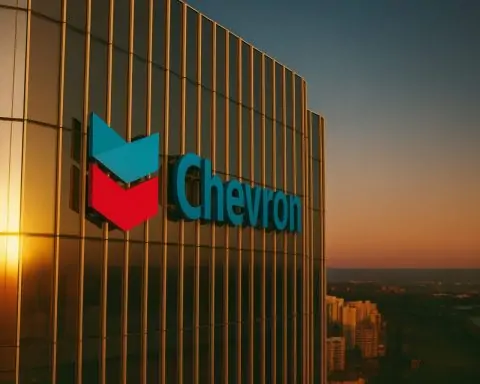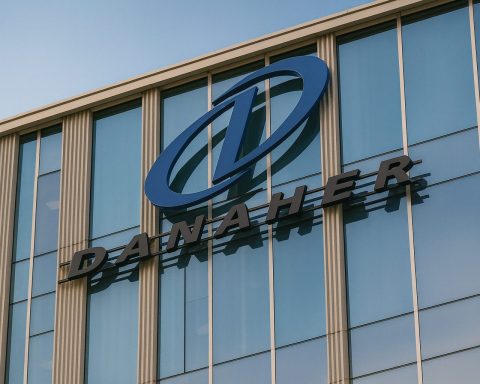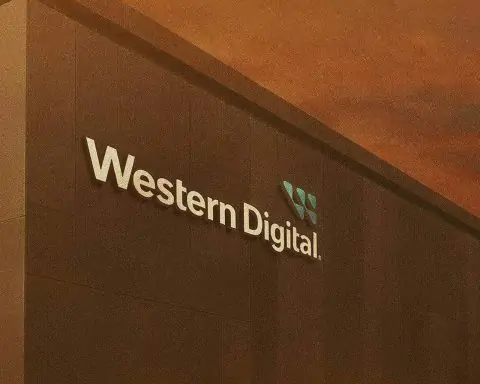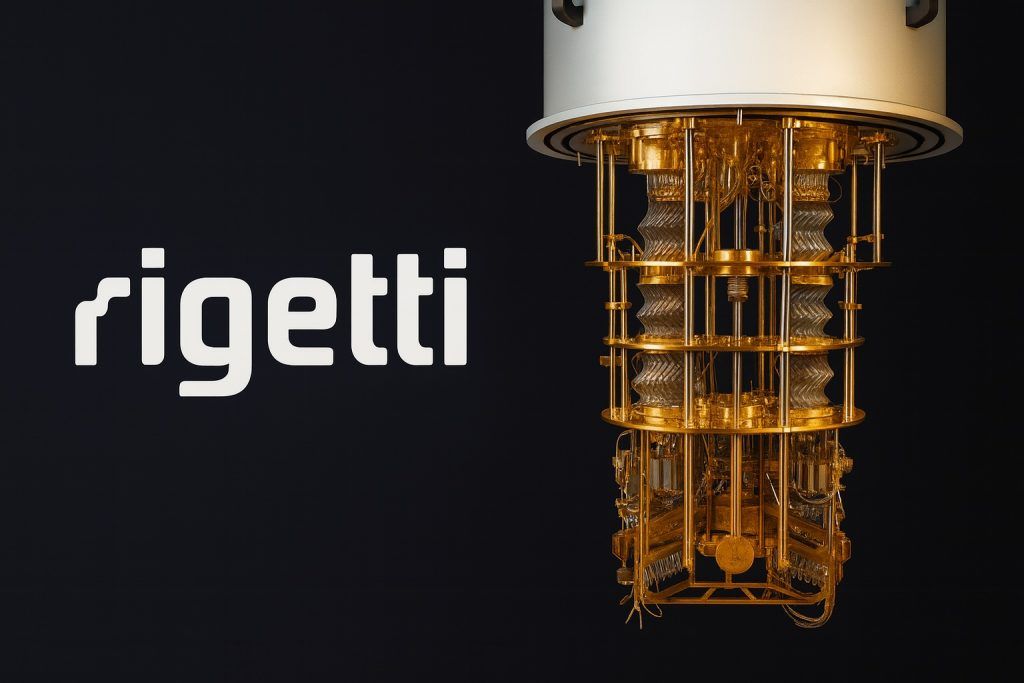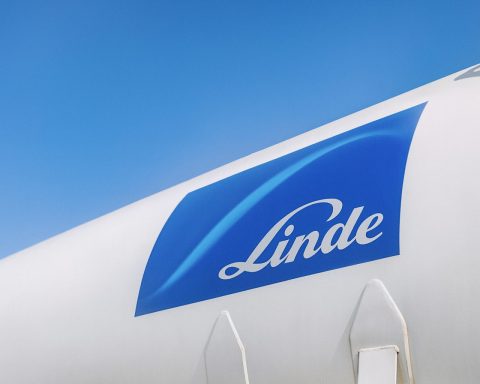- Pentagon Contract: U.S. Antimony (NYSE: UAMY) secured a sole-source five-year Defense Logistics Agency deal worth up to $245 million to supply antimony ingots [1] [2]. This contracts underscores UAMY’s strategic role as a domestic critical-minerals supplier.
- Stock Surge: UAMY shares exploded from below $1 in September 2025 to an all-time high of $19.71 (intraday, Oct 14) – roughly a 1500% YTD gain [3]. The market cap briefly swelled above $2 billion.
- Recent Price: As of late October 2025 UAMY trades around $8.4–$9.0 [4] [5], down from its October peak. (For example, on Oct 29 it closed $8.40 [6].) The stock has been extremely volatile, with daily swings of 10–20% as momentum traders and retail investors trade in and out [7] [8].
- Fundraising: In early October 2025 UAMY raised about $51.25 million in two above-market stock offerings – 2.5 M shares at $7.50 on Oct 6 and 2.377 M shares at $10.50 on Oct 10 [9] [10]. After closing these deals (netting roughly $24.4 M and $24.4 M, respectively), management reported ~$64M cash on hand [11] to fund operations, inventory and expansion.
- Operations: UAMY operates the only two antimony smelters in North America (in Montana and Mexico) [12] [13]. It processes ore into antimony oxide, metal and sulfide – e.g. antimony oxide (for flame retardants, plastics, textiles), antimony metal (batteries, ordnance) and antimony trisulfide (primer in ammunition) [14] [15]. It also produces zeolite and recovers gold/silver as byproducts [16] [17]. UAMY has been rapidly staking mining claims in Montana, Alaska and Ontario to secure ore, and in mid-Oct announced mechanized exploration at its Stibnite (MT) project [18].
- Financials: In 1H 2025 UAMY’s revenue surged 160% YoY to $17.53M (vs $6.74M in 1H 2024) [19]. Management now guides roughly $50M in revenue for 2025 and $100M+ for 2026 (even raising 2026 guidance to $125M on Oct 30) [20] [21]. By contrast, 2024 revenue was only ~$15M [22]. The company remains thinly profitable, with losses narrowing (2024 net loss was ~$1.7M [23]).
- Market Valuation: At ~$8.40, UAMY’s market cap is about $1.0–1.2 billion [24] [25]. Even after recent pullback, its forward P/E is extremely high (on the order of 60–100+) due to expected profits being modest [26] [27]. Analysts’ 12-month consensus target is roughly $4.40–$4.50 [28] [29], implying the stock is trading well above those levels.
- Industry Context: Antimony is a U.S. “critical mineral” used in munitions, flame-retardants and batteries. China historically supplied ~60–80% of global antimony, but export bans in 2024 have created a severe U.S. supply crunch [30] [31]. Prices have soared – above $60,000/ton (4× year-earlier) [32] – and U.S. battery and defense groups call the shortage a “national emergency” [33]. This geopolitical squeeze has made UAMY’s domestic supply role far more important than before.
Current Stock Price & Recent Performance
United States Antimony’s stock has been on a historic run. As of Oct. 30, 2025 UAMY closed around $8.40 [34] [35], still nearly nine times its Sept 2024 price (~$0.78) but far below its mid-Oct intraday peak (~$19.71) [36] [37]. The year-to-date performance is extraordinary: TS2.Tech notes the stock “skyrocketed” ~1400–1500% from under $1 to nearly $20 in October [38]. Even after the pullback, UAMY remains up close to 800–900% YTD [39].
The stock’s chart resembles a parabola and a rollercoaster at once. After trading under $2 through early Oct, the Pentagon contract news sparked an enormous rally. From Oct 13–15 the shares jumped well above $10 (even hitting $13.93 on Oct 10 [40]), then surged to the $15–18 range. Following the announced offerings and acquisition news, UAMY hit its peak $19.71 intraday on Oct 14 [41]. Since then, however, heavy profit-taking has driven a sharp decline. By Oct 27 the stock had plunged about 20%, trading in the $9–12 range [42]. High trading volumes (tens of millions of shares) have accompanied these swings, reflecting speculative trading. As TS2 described, the UAMY stock “rollercoaster ride” is clear: it “surged more than 1,400% YTD, peaked mid-month, then pulled back” (Oct 27 close was about $9.50) [43].
Key Developments (Late Oct 2025)
- Pentagon Deal Execution: The Sept. 23 Pentagon award set off the October surge. Reuters and Investing.com report the contract is a five-year sole-source deal to supply antimony metal (ingots) for the U.S. Defense Stockpile [44] [45]. UAMY was already able to fulfill it “immediately” from its domestic mills, and the first ~$10M delivery order was expected in late Sept [46] [47]. CEO Gary Evans celebrated the role, saying “it’s incredibly meaningful for all our employees to play such a strategic role in strengthening our nation’s defense readiness” [48]. The contract’s $245M ceiling dwarfs USAC’s entire 2024 revenues (~$15M) [49], highlighting the scale.
- Fundraising: To gear up for the Pentagon orders and planned expansion, USAC raised fresh capital. A Form 8-K (Oct.10) shows a $25M direct registered offering closed mid-Oct (2.377M shares at $10.50) [50]. Earlier, on Oct.6 it had agreed a $26.25M offering (2.5M shares at $7.50) [51]. After these, management reported about $64M cash on hand [52]. Proceeds are earmarked for inventory (antimony ore), mill expansions, leasehold development, and potential acquisitions [53]. The funds also greatly increased the cash cushion ahead of contract fulfillment.
- Mining Expansion – Stibnite: In early October USAC began work on its Montana Stibnite Hill property. Regulators approved a plan change on Oct 2, and by Oct 7 it had started mechanized bulk sampling [54]. Over 250 tons of high-grade antimony ore were hauled to a flotation mill for testing [55]. Preliminary metallurgy indicates the Stibnite ore could meet military primer specifications [56]. Management simultaneously raised 2026 revenue guidance by $25M to $125M [57], reflecting expected output from Stibnite and other projects. USAC also won sole-source DLA approval to supply antimony trisulfide (used in ammunition) [58]. These developments suggest USAC is working to turn its strategic acreage (Montana, Alaska, Ontario) into production.
- Larvotto Resources Proposal: On Oct.19 USAC announced it had submitted a confidential proposal to acquire Larvotto Resources Ltd (ASX:LRV), an Australian antimony/gold developer [59]. The offer would give Larvotto shareholders 6 USAC shares for 100 LRV shares (implied ~A$0.20 per LRV) [60]. USAC already owns ~10% of Larvotto and would become a ~A$400M entity post-deal. Management said combining with Larvotto “would produce one of the world’s largest antimony producers outside of China” [61], significantly boosting reserves and milling potential. The timing coincided with President Trump’s meeting with Australia’s PM, suggesting geopolitical alignment in critical minerals. (General Jack Keane, former Vice Chief of Army Staff, is on USAC’s board, underscoring U.S.–Australia defense ties.)
- Volatility and Profit-Taking: After these announcements and runs, the share price saw wild trading. In the last days of October, UAMY has moved mostly sideways to down as traders locked in gains. On Oct 27 it fell ~18% on heavy volume [62]. By Oct 30 it was around $8.40 [63] [64]. Analysts attribute this to intense “momentum” trading and the stock becoming a “meme-like” speculation. TS2.Tech cautioned the rally “resembled speculative meme behavior” [65], and even Jim Cramer urged profit-taking after such a parabolic run.
Company Overview & Operations
United States Antimony (USAC, ticker UAMY) is a Dallas-based mining & processing company focused on antimony, zeolite and other critical minerals. It was founded in 1968 (originally as Bear River Zeolite) and merged with antimony assets over time. UAMY owns North America’s only two operating antimony smelters, located in Thompson Falls, MT and Madero, Mexico [66]. These mills process third-party ore into refined antimony products. As USAC describes: it “processes third party ore primarily into antimony oxide, antimony metal, antimony trisulfide” at its Montana and Mexico plants [67]. For example, antimony oxide is a flame-retardant in plastics and textiles, antimony metal goes into batteries and military ordnance, and antimony sulfide serves as an ammunition primer [68]. The Montana site also extracts gold and silver from ore, and USAC’s Bear River Zeolite facility in Idaho produces zeolite for water treatment and agriculture [69].
Before 2025, USAC’s sales were modest (2024 revenue ~$15M [70]). Its traditional business involved processing old antimony mine tailings (expanding that in Alaska now) and toll-milling ore. USAC claims that by 2025 it will be “the first fully integrated antimony company in the world, outside of China” – meaning it mines, mills and refines its own ore [71]. In late 2024 it relocated corporate headquarters to Dallas (though operations are in MT/Mexico) and began aggressively acquiring mineral claims in Montana and Alaska [72]. Key executives include Co-CEO Gary C. Evans and General Jack Keane (board member, ex-Army 4-star), giving the company strong defense connections.
Financial Analysis & Outlook
USAC’s financials reflect rapid growth from a small base. In Q2 2025 it reported H1 revenue of $17.53 million (a 160% YoY jump from $6.74M) [73]. The boost came from higher antimony sales and industrial demand. (For context, full-year 2024 revenue was $14.94M [74].) Net loss was shrinking – for 2024 it was ~$1.7M [75]. The company’s margins remain thin, as its production costs and recent investments (e.g. mill expansions) weigh on earnings. Data from StockAnalysis (Oct 2025) shows trailing twelve-month revenue ~$25.7M but net income still negative [76].
USAC has substantial cash (thanks to the recent offerings) and no debt (per CEO Evans on Bloomberg TV [77]). Management’s outlook is bullish: it targets ~$50M revenue in 2025 and “about $100M” in 2026 [78], later bumped to $125M [79]. These forecasts assume smooth ramp-up of mining projects (Montana Stibnite, Alaska operations) and fulfillment of the defense contract. Whether that materializes depends on execution.
Wall Street sentiment is mixed. Many analysts rate UAMY a Buy/Strong Buy, reflecting excitement about the defense-backed growth story. For example, MarketBeat notes that as of late Oct one analyst has a “Strong Buy” rating and five have “Buy” (consensus = “Buy”) [80]. Insider and institutional interest is high; notably, CEO Gary Evans himself bought 100,000 shares in Sept at $6.13 [81], and some hedge funds (e.g. Truist, Goldman) have been increasing positions. However, analyst price targets tend to be far below the stock’s recent price. The consensus 12-month target is around $4.40 [82] [83] (reflecting outdated estimates), and more recent targets are in the $4–9 range. (Several brokers have $8.50 marks on board [84].) In other words, the stock is trading well above where analysts generally expect it in a year. Forward P/E ratios (on the small forecasted profits) are astronomical (often 60–100×) [85].
Industry Context: Antimony Market Trends
Antimony’s market fundamentals have shifted dramatically. China mined ~60% of global antimony in 2024 [86] and supplied ~80% of U.S. needs [87]. Starting in late 2024, Beijing imposed strict controls and ultimately banned most antimony exports to the U.S. [88]. This abrupt cut created a supply vacuum. Reuters reports antimony prices quadrupled over the past year, topping $60,000/ton [89]. American industry leaders (e.g. the Responsible Battery Coalition) have labeled the shortfall a “national emergency” [90]. The U.S. government, under Trump’s “Critical Minerals” push, has moved from talk to heavy spending – reportedly allocating up to $1 billion for domestic antimony stockpiles in 2025 (Pentagon contracts plus other programs). Mining and critical-minerals firms are lobbying fiercely: one strategist said that once Washington started “giving money away…every minerals boardroom in America started to think, ‘What about us?’” [91].
In this environment, U.S. Antimony’s profile soared. As Reuters noted, the Pentagon deal “is part of a broader effort to shore up U.S. supply chains for strategic materials amid rising geopolitical tensions” [92]. UAMY’s status as the only domestic antimony refiner and its newly acquired mining rights make it a focal point. Its management often stresses that UAMY can now provide supply “outside of China” [93]. The company’s stock is being watched alongside other critical-mineral plays (lithium, rare-earths, etc.). Even within that sector, antimony moved dramatically – for example, on Oct 30 many rare-earth/antimony stocks fell as some Chinese export curbs were rumored to be eased, illustrating how trade policy remains a key catalyst.
On the environmental side, antimony mining and smelting can be pollution-intensive, so USAC emphasizes compliance and cleanup (it has plans to remediate old tailings at Stibnite). The company’s Bear River Zeolite operations also focus on environmental uses (water treatment). Any missteps in permitting or environmental controls could pose reputational and legal risks, though none have been publicly flagged recently. (Earlier, in 2023, USAC discontinued its smaller Mexico antimony mine to focus on North America.)
Expert Commentary & Market Sentiment
Industry Analysts: Professional analysts acknowledge UAMY’s unique position but urge caution. As one TS2.Tech write-up put it, UAMY’s stock jump “resembled speculative meme behavior” [94]. The firm noted Wall Street’s ambivalence – consensus “Buy” ratings, yet average targets ($8–9) sit well below the stock’s then-current price [95]. Simply Wall St. (a financial modeling site) estimated a fair value of only $7.50 per share based on fundamentals [96]. TS2 also pointed out that at mid-October prices the forward P/E on USAC’s modest earnings run was over 100 [97], an indication of how richly the market is valuing future prospects.
Media & Influencers: Mainstream finance media have been cautious. For example, CNBC host Jim Cramer warned viewers to “take profits” after UAMY’s outsized surge, likening it to a volatile “meme stock” [98]. That view echoes through social media: UAMY has been a frequent topic on finance forums, with bulls touting national-security upside and bears warning of a bubble. Retail sentiment has fluctuated – surveys from Investor’s Business Daily showed interest waning as the stock pulled back in late Oct.
Insider Views: Company officials stress the growth story. CEO Gary Evans emphasizes UAMY’s zero-debt, cash-flow-positive status (rare for a miner) and the Pentagon contract’s validation of USAC’s strategy. In a Bloomberg TV interview he noted, “We actually have revenues, cash flow, EBITDA and net income, which is unusual for a small mining company,” while highlighting the company’s strong balance sheet [99]. He also credited lobbying efforts with educating policymakers: “The whole intent…is to help legislators understand what we’re doing. Some didn’t even know we existed,” he told Reuters [100]. His confidence is echoed by his own wallet – as noted above, he bought 100,000 shares in late Sep [101].
On the outside, commodity strategists see the move as part of a wider critical-minerals trend. Red Cloud Securities’ Ken Hoffman observed that federal incentives have made every miner “ask, ‘What about us?’” [102]. Thomas Troche and others at William Blair (a broker covering mining) have initiated coverage on UAMY, noting it could become a linchpin supplier. But none have issued new public price targets around this time (one initial William Blair note in Oct 2025 was nominal, reflecting the high uncertainty). Hedge funds appear largely optimistic: recent SEC filings show firms like GS and Truist lifting their stakes [103].
Forecasts & Outlook
Going forward, UAMY faces a bifurcated outlook. On one hand, the Pentagon deal alone bakes in tens of millions in orders annually, giving multi-year revenue visibility. Management’s hike of 2026 guidance to $125M [104] suggests they expect to steadily ramp production from the new mines. If successful, USAC could grow into the tens-of-millions-in-EV-sector ($$) supplier envisioned by federal plans.
On the other hand, market sentiment is cautious. Given the current valuation, many analysts suggest that most positive news is already priced in. The consensus “Buy” ratings indicate Wall Street still sees long-term upside, but the low price targets imply skepticism about short-term overvaluation. Technical indicators reflect bearish near-term momentum – by Oct 31 the daily trend is down and momentum traders have turned negative.
Earnings reports will be pivotal. UAMY’s next quarterly report (due Nov 2025 [105]) will show Q3 2025 results – likely higher revenue from H1 levels but perhaps still a small profit. Guidance and comments on project timelines will be scrutinized. If actual performance meets or exceeds expectations, the stock could find another bid. Conversely, any hint of delays (e.g. mining bottlenecks at Stibnite, Alaska, or slow government procurement) could trigger profit-taking.
Market sentiment on social media has some pull-out: some retail investors have trimmed positions after their “home run”, while others remain long-term convinced of U.S. critical-mineral plays. The heavy recent trading volume suggests that momentum has been driven by short-term traders; if they leave, the stock could see further drops or consolidation. In sum, forecasts range from those who believe UAMY is undervalued (given a national shortage) to skeptics who warn it may give back much of the October gains.
Risks & Opportunities
- Risks: UAMY’s current valuation is very high relative to its earnings, which creates bubble risk [106]. Extreme volatility (±10–20% moves in a day) makes it hard to hold safely. Further dilution is possible: the company may need more capital if contracts or expansion costs exceed expectations. Execution risk looms – building the Stibnite mine, expanding the Montana/Mexico mills and integrating an acquisition are complex tasks that could face delays or cost overruns. Failure to deliver on the DLA contract on schedule would also undermine confidence. Finally, broader commodity price swings (if China relaxes export limits) could soften antimony prices, hurting USAC’s margins.
- Opportunities: UAMY is uniquely positioned as the only major domestic antimony supplier. The Pentagon contract and potential additional government backing offer a stable revenue base. Successful mining at Stibnite and Alaska could dramatically raise output and profits. Management’s aggressive expansion (Larvotto deal, 102 new claims in Montana) could pay off by making USAC a global-scale producer [107] [108]. Insider confidence (CEO share purchases [109]) and raised guidance indicate the company sees clear growth paths. If even part of the 2026 guidance materializes, revenues could soar. In a market starved for domestic critical minerals, USAC may also benefit from subsidies, priority permitting, or strategic partnerships (e.g. a rumored government equity stake was discussed but not confirmed).
In summary, U.S. Antimony’s stock has become a lightning rod for the critical minerals boom. Its unprecedented rally reflects both the real strategic importance of antimony and a speculative fervor. Investors must weigh the company’s privileged defense contracts and growth plans against the risks of overshoot and execution. Careful risk management is advised, as the stock’s future path will hinge on turning contracts and projections into consistent reality.
Sources: Latest company filings and press releases [110] [111] [112]; market news (Reuters [113] [114], Investing.com [115] [116], MarketBeat [117] [118], TS2.Tech [119] [120]); industry analyses [121] [122] and financial data services [123] [124].
References
1. ts2.tech, 2. www.reuters.com, 3. ts2.tech, 4. ng.investing.com, 5. fintel.io, 6. fintel.io, 7. ts2.tech, 8. ts2.tech, 9. www.stocktitan.net, 10. www.stocktitan.net, 11. www.stocktitan.net, 12. www.usantimony.com, 13. www.usantimony.com, 14. www.usantimony.com, 15. www.usantimony.com, 16. www.usantimony.com, 17. www.usantimony.com, 18. www.stocktitan.net, 19. www.usantimony.com, 20. ts2.tech, 21. www.stocktitan.net, 22. www.investing.com, 23. stockanalysis.com, 24. fintel.io, 25. stockanalysis.com, 26. ts2.tech, 27. stockanalysis.com, 28. stockanalysis.com, 29. www.marketbeat.com, 30. www.reuters.com, 31. ts2.tech, 32. www.reuters.com, 33. www.reuters.com, 34. fintel.io, 35. ng.investing.com, 36. ts2.tech, 37. ng.investing.com, 38. ts2.tech, 39. ts2.tech, 40. ts2.tech, 41. ts2.tech, 42. ts2.tech, 43. ts2.tech, 44. www.reuters.com, 45. www.investing.com, 46. www.reuters.com, 47. www.investing.com, 48. www.investing.com, 49. www.investing.com, 50. www.stocktitan.net, 51. www.stocktitan.net, 52. www.stocktitan.net, 53. www.stocktitan.net, 54. www.stocktitan.net, 55. www.stocktitan.net, 56. www.stocktitan.net, 57. www.stocktitan.net, 58. www.stocktitan.net, 59. www.usantimony.com, 60. www.usantimony.com, 61. www.usantimony.com, 62. stockstotrade.com, 63. fintel.io, 64. ng.investing.com, 65. ts2.tech, 66. www.usantimony.com, 67. www.usantimony.com, 68. www.usantimony.com, 69. www.usantimony.com, 70. www.investing.com, 71. www.usantimony.com, 72. www.usantimony.com, 73. www.usantimony.com, 74. www.investing.com, 75. stockanalysis.com, 76. stockanalysis.com, 77. www.bloomberg.com, 78. ts2.tech, 79. www.stocktitan.net, 80. www.marketbeat.com, 81. www.marketbeat.com, 82. stockanalysis.com, 83. www.marketbeat.com, 84. www.marketbeat.com, 85. ts2.tech, 86. www.reuters.com, 87. ts2.tech, 88. www.reuters.com, 89. www.reuters.com, 90. www.reuters.com, 91. www.reuters.com, 92. www.reuters.com, 93. www.investing.com, 94. ts2.tech, 95. ts2.tech, 96. ts2.tech, 97. ts2.tech, 98. ts2.tech, 99. www.bloomberg.com, 100. www.reuters.com, 101. www.marketbeat.com, 102. www.reuters.com, 103. www.marketbeat.com, 104. www.stocktitan.net, 105. stockanalysis.com, 106. ts2.tech, 107. www.usantimony.com, 108. www.stocktitan.net, 109. www.marketbeat.com, 110. www.usantimony.com, 111. www.usantimony.com, 112. www.stocktitan.net, 113. www.reuters.com, 114. www.reuters.com, 115. www.investing.com, 116. www.investing.com, 117. www.marketbeat.com, 118. www.marketbeat.com, 119. ts2.tech, 120. ts2.tech, 121. www.reuters.com, 122. www.reuters.com, 123. ng.investing.com, 124. stockanalysis.com

